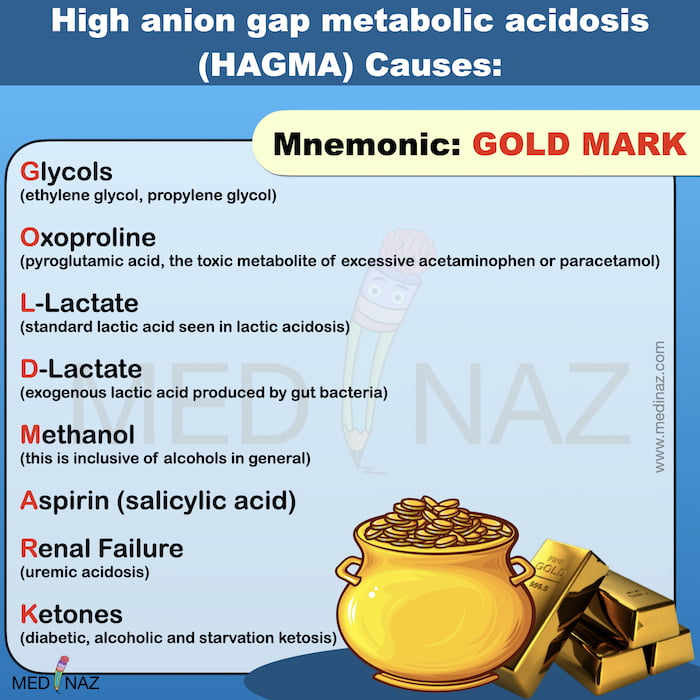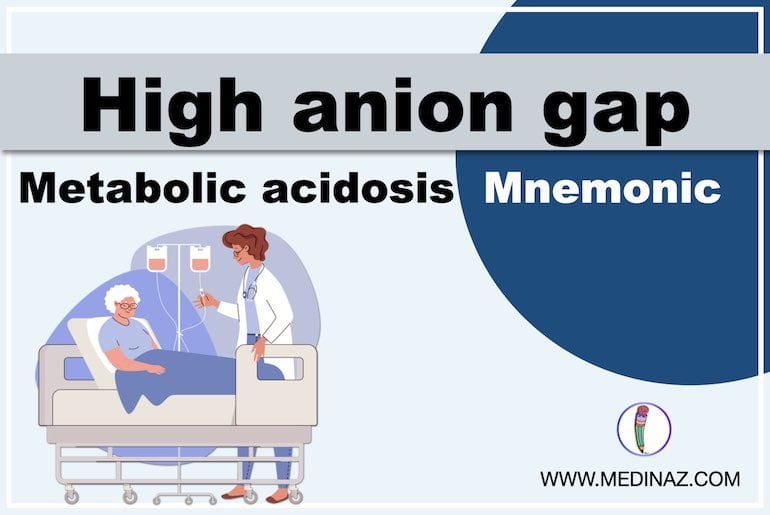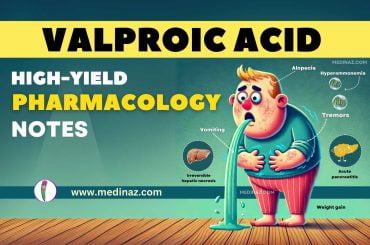High anion gap metabolic acidosis is a form of metabolic acidosis characterized by a high anion gap. High anion gap Metabolic acidosis mnemonic “GOLD MARK”
G – Glycols (ethylene glycol, propylene glycol)
O – Oxoproline (pyroglutamic acid, the toxic metabolite of excessive acetaminophen or paracetamol)
L-Lactate (standard lactic acid seen in lactic acidosis)
D- D-Lactate (exogenous lactic acid produced by gut bacteria)
M – Methanol (this is inclusive of alcohols in general)
A – Aspirin (salicylic acid)
R – Renal Failure (uremic acidosis)
K – Ketones (diabetic, alcoholic and starvation ketosis)

The acronym MUDPILES is often used as a memory aid to recall the potential causes of an elevated anion gap in metabolic acidosis.
M — Methanol
U — Uremia (chronic kidney failure)
D — Diabetic ketoacidosis
P — Paracetamol, Propylene glycol
I — Infection, Iron, Isoniazid (which can cause lactic acidosis in overdose), Inborn errors of metabolism (an especially important consideration in pediatric patients)
L — Lactic acidosis
E — Ethylene glycol (Note: Sometimes, we also include ethanol in this mnemonic, but it causes acidosis primarily by increasing lactic acid production during intoxication)
S — Salicylates
Another frequently used mnemonic is KARMEL
K — Ketoacidosis
A — Aspirin
R — Renal failure
M — Methanol
E — Ethylene glycol
L — Lactic acidosis
Other mnemonics you may find helpful:
A Visual Learning Platform





